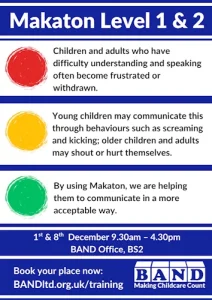
It’s been a few months of amazing space events:
MARSONE, an initiative to place humans on Mars in 2023, attracts over 80,000 video applicants. It’s a one way trip for 4 people initially, to live their life on the surface of Mars. A further 2 people will be sent up every 2 years after that. The first few years are spent building living space and growing food before they head out to be the first humans exploring the planet. There might be an option for one of them to return in the future, the costs are too high to consider anymore people returning. As the only planet we know of so far that humans could potentially survive on, this is a very important mission! www.marsone.com.
Chris Hadfield, Canadian Astronaut who has just returned from over 5 months on the International Space station, uses twitter in space to showcase fantastic photo’s from the space station and films the first video in space, a cover of himself singing Space Oddity by David Bowie. www.youtube.com/channel/UCtGG8ucQgEJPeUPhJZ4M4jA
Major Tim Peake has been chosen as the first official British Astronaut EVER: he will train for the next 2 and a half years before heading up to the International Space station in 2015. He says ‘a large part of this is to inspire a generation’, so how can we all start doing this?
To narrow it down, we have focused on Mars so here are some ideas.
Mars Facts:
- Mars is nicknamed the red planet because it is covered with rust-like dust. Even the atmosphere is a pinkish red, colored by tiny particles of dust thrown up from the surface.
- Mars experiences violent dust storms which continually change its surface.
- Mars has many massive volcanoes and is home to Olympus Mons, the largest volcano in our solar system, it stands 21km high and is 600km across the base.
- Mars has a very thin atmosphere made mostly of carbon dioxide. It is not thick enough to trap the sun’s heat like Venus, so the planet is very cold.
- Mars has many channels, plains and canyons on the surface which could have been caused by water erosion in the past.
- Mars has very weak gravity which is one third of that on Earth, but this is still much better for humans than the moon whose gravity is one sixth of Earths. If a human lives with Mars low gravity for a long time, it is not known if they would be able to survive back on Earth.
- Mars has frozen water underneath it’s surface, this means humans could use these to survive.
- A day on Mars lasts about the same as Earth, on the moon a day lasts 27 times as long so one day on the moon is nearly a month on earth. This is important as humans will be healthier on Mars keeping the same day rhythm as on Earth.
Ideas for your setting:
Make your own video entry to join the mission to Mars. Watch some of the video entries on http://applicants.mars-one.com/ for ideas. MarsOne suggests ‘Why would you like to go to Mars? How would you describe your sense of humour? What makes you the perfect candidate for this mission to Mars’. Or if you don’t want to go, why not? BAND members can borrow our video camera to film entries.
Astronaut training camp for a day. The MarsOne website has lots of interesting information: The mission roadmap outlines how they will progress to humans going to Mars year on year, Humankind on Mars talks about the astronauts 8 years of training. Astronauts need to be physically and mentally fit, what challenges can you create to test this?
Design your own mission patch to go on the astronaut’s suit – what would you call the mission or put on the patch?
Make up your own space song. Watch Chris Hadfield singing in space to get ideas.
Eat some space food. Follow Chris Hadfield as he makes a peanut butter and honey sandwich in space and do the same in your setting, you need to use tortillas instead of bread as in space the bread crumbs float around too much. http://www.youtube.com/watch?v=2vio09T-8qA
Mix sand in with paint to create a textured martian landscape picture that you can add your own cut out martians to.
Have a look around the NASA Mars kids site, there is Mars Rover colouring sheet to download and some games. There are some other interesting bits if you dig around a little. http://mars.jpl.nasa.gov/participate/funzone/
The International Space Station also has a kids site with regular competitions: http://www.esa.int/esaKIDSen/lab.html
Make your own space button model to check out how far away you would be…..
Posted on
⇨ To get more stories like this one join up & get the BAND newsletter. ⇦
Fundraising News: Bristol Temple Quarter Grants
Bristol Temple Quarter Grants This Bristol Temple Quarter grant programme is being delivered by Quartet on behalf of the Bristol Temple Quarter Limited Liability Partnership (BTQLLP). The BTQLLP has been formed by...
MAKATON 1&2 Dec 2025
Spotlight on Makaton Being able to communicate is one of the most important skills we need in life. Makaton is a unique language programme that uses symbols, signs and speech to enable...
BAND Video Breifing – Environment Policy and Climate Action Plan
Environment Policy and Climate Action Plan Following on from our briefing on our new template Environment Policy and Climate Action Plan, you can now watch a recording of the briefing, so if...
Safer Recruitment Training 14/11/25
https://bandltd.org.uk/course/safer-recruitment...
Fundraising News: Happy By Nature Fund
Happy By Nature Fund “We are offering 10 schools a grant of £10,000, plus expert support from Learning through Landscapes (LtL) to transform their outdoor spaces – whether that’s greening a playground, creating a nature...



